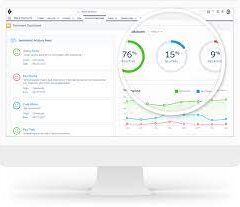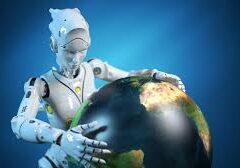Why Is the Focus Moving Away from AI Agents (for Now)?
Companies like Salesforce and ServiceNow made bold moves toward AI Agents, but the reality is that the technology has yet to reach the accuracy required for reliable production use.
While AI Agent demos and prototypes generate excitement, their real-world performance tells a different story. For instance, Claude AI Agent Computer Interface (ACI) operates at just 14% of human performance. A study from TheAgentFactory highlights that AI Agents currently have a success rate of only 20%, a stark contrast to the expectations set by marketing hype.
Even with advancements like OpenAI’s Operator, AI Agents using web browsing capabilities have reached 30-50% accuracy—still significantly lower than human performance levels, which exceed 70%. Additionally, recent research reveals AI Agents relying on web browsing are vulnerable to malicious pop-ups, making them susceptible to security threats.
Currently, AI Agents perform tasks using two main methods:
- Web browsing (e.g., WebVoyager, OpenAI Operator).
- GUI-based interaction (e.g., Anthropic’s approach).
Both methods essentially treat the user interface as the API, an approach that bypasses the need for individual API integrations. However, the practical limitations—accuracy, security, and cost—have led organizations to pivot toward Agentic Workflows as a more viable solution.
Why the Shift to Agentic Workflows?
Knowledge work is broken. Studies indicate that employees spend 30% of their time searching for information, while also struggling to answer complex questions and synthesize insights from disparate sources.
Agentic Workflows provide a structured approach to these challenges by:
- Breaking down complex tasks into smaller, manageable subtasks.
- Chaining these tasks into a logical sequence to improve efficiency.
- Enhancing observability, inspectability, and discoverability for better decision-making.
A key aspect of this shift is data synthesis—the ability to consolidate and analyze information from multiple sources to provide a single, actionable answer. For example, ChatGPT’s Deep Research isn’t a new model but a new agentic capability that conducts multi-step research on the internet, achieving in minutes what would take a human hours.
Similarly, LlamaIndex’s concept of Agentic RAG (Retrieval-Augmented Generation) focuses on synthesizing data for an “audience of one”—delivering precise insights at the moment they are needed.
In the coming months, expect to see an increased focus on personalized agentic workflows, data synthesis, and desktop orchestration—a shift toward AI as a facilitator rather than an autonomous decision-maker.
The Rise of Reasoning & Problem-Solving AI
Modern AI models are evolving to integrate reasoning as a core capability, allowing them to tackle complex problems through systematic decomposition.
Rather than relying solely on direct outputs, these models:
- Break down large problems into smaller components.
- Simulate human-like thought processes for more accurate responses.
- Improve transparency in decision-making, making AI-driven insights more interpretable.
Previously, users had to manually instruct models on reasoning through structured prompts and few-shot learning. Now, AI models are increasingly learning these capabilities natively, reducing the need for extensive prompt engineering.
Moving Forward: Solving Real Business Challenges
Organizations must shift their focus from chasing specific tools—whether it’s RAG-based solutions, prompt engineering, or AI Agents—to solving real-world business problems.
With new technologies emerging at an unprecedented pace, the true measure of success is not in mastering the latest trend, but in applying technology to deliver tangible value. Whether it’s enhancing customer experiences, streamlining operations, or solving industry-specific challenges, the key question remains:
How can we use AI to drive meaningful, measurable impact?
By embracing this mindset, businesses can future-proof their operations and stay ahead in an ever-evolving digital landscape.










